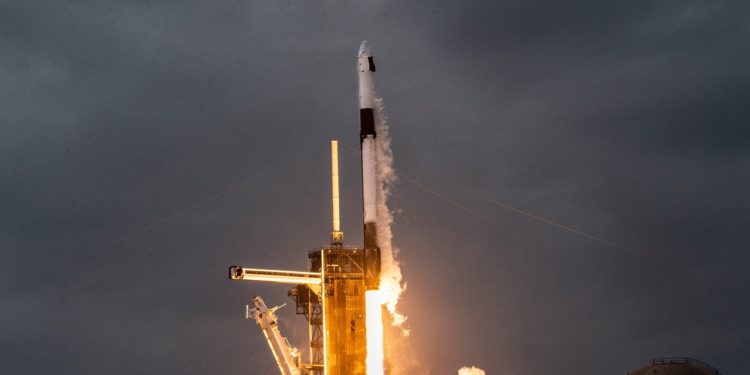By WIRED
Two prototype satellites for the Missile Defense Agency and four missile-tracking satellites for the US Space Force rode a SpaceX Falcon 9 rocket into orbit Wednesday from Florida’s Space Coast.
These satellites are part of a new generation of spacecraft designed to track hypersonic missiles launched by China or Russia and perhaps emerging missile threats from Iran or North Korea, which are developing their own hypersonic weapons.
Hypersonic missiles are smaller and more maneuverable than conventional ballistic missiles, which the US military’s legacy missile defense satellites can detect when they launch. Infrared sensors on the military’s older-generation missile tracking satellites are tuned to pick out bright thermal signatures from missile exhaust.
The New Threat Paradigm
Hypersonic missiles represent a new challenge for the Space Force and the Missile Defense Agency (MDA). For one thing, ballistic missiles follow a predictable parabolic trajectory that takes them into space. Hypersonic missiles are smaller and comparatively dim, and they spend more time flying in Earth’s atmosphere. Their maneuverability makes them difficult to track.
A nearly five-year-old military organization called the Space Development Agency (SDA) has launched 27 prototype satellites over the last year to prove the Pentagon’s concept for a constellation of hundreds of small, relatively low-cost spacecraft in low-Earth orbit. This new fleet of satellites, which the SDA calls the Proliferated Warfighter Space Architecture, will eventually number hundreds of spacecraft to track missiles and relay data about their flight paths down to the ground. The tracking data will provide an early warning to those targeted by hypersonic missiles and help generate a firing solution for interceptors to shoot them down.
The SDA constellation combines conventional tactical radio links, laser inter-satellite communications, and wide-view infrared sensors. The agency, now part of the Space Force, plans to launch successive generations, or tranches, of small satellites, each introducing new technology. The SDA’s approach relies on commercially available spacecraft and sensor technology and will be more resilient to attack from an adversary than the military’s conventional space assets. Those legacy military satellites often cost hundreds of millions or billions of dollars apiece, with architectures that rely on small numbers of large satellites that might appear like a sitting duck to an adversary determined to inflict damage.
Four of the small SDA satellites and two larger spacecraft for the Missile Defense Agency were aboard a SpaceX Falcon 9 rocket when it lifted off from Cape Canaveral Space Force Station at 5:30 pm EST (2230 UTC) Wednesday.
The rocket headed northeast from Cape Canaveral to place the six payloads into low-Earth orbit. Officials from the Space Force declared the launch a success later Wednesday evening.
The SDA’s four tracking satellites, built by L3Harris, are the last spacecraft the agency will launch in its prototype constellation, called Tranche 0. Beginning later this year, the SDA plans to kick off a rapid-fire launch campaign with SpaceX and United Launch Alliance to quickly build out its operational Tranche 1 constellation, with launches set to occur at one-month intervals to deploy approximately 150 satellites. Then, there will be a Tranche 2 constellation with more advanced sensor technologies.
The primary payloads aboard Wednesday’s launch were for the Missile Defense Agency. These two Hypersonic and Ballistic Tracking Space Sensor (HBTSS) satellites, one supplied by L3Harris and the other by Northrop Grumman, will demonstrate medium field-of-view sensors. Those sensors can’t cover as much territory as the SDA satellites but will provide more sensitive and detailed missile tracking data.







Discussion about this post